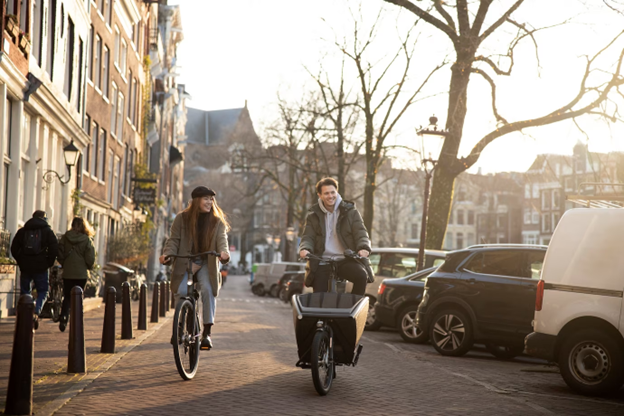
The world has long been familiar with the cycling culture of the Netherlands, and the fact that it’s widely spread across the country. Nowadays, the Dutch use bicycles for transportation daily. One-quarter of all trips in the country are made on two wheels, as opposed to the US where cycling is mostly recreational. The Netherlands has gradually become the leading example of a cycling nation, and the US could learn a lot from its example.
The History of Change
A few decades ago, the Netherlands has been going through the same problem as other developed countries in Europe when it comes to the high increase in the number of cars on the streets. Due to the rapid rise in vehicle ownership, there were 100 cars per 500 inhabitants by 1970. Many of the Dutch streets were constructed in medieval times and they were simply not suitable for that kind of traffic.
Bike-Centric Planning
The Dutch government took a series of steps to encourage the locals to embrace the use of bikes, and developing miles and miles of bicycle lanes was the biggest one. Today, the country is home to more than 35,000 km of bike paths, which sounds even more significant when we take into consideration that the country’s road network is only 140,000 km long.
Additionally, there are also specific roads for both cars and bikes where bicycles have priority, and many of them feature signs saying “cars are guests”. Moreover, Dutch roundabouts are also an example of smart urban planning. Close to 60% of roundabouts in Dutch cities have a circular bicycle track placed around the roundabout, intersecting the exits. In many urban areas, bikes are also given the right of way.
Investments in Bicycle Parking
Besides the efforts put into designing functional roads, the authorities also put time and money into the development of large-scale bike parking. For example, in 2019, Utrecht got the biggest multistorey bike park in the world, with enough space to park 12,500 bicycles at once. On top of that, to enable a smooth transition from one type of transport to another, most train stations in the Netherlands now have bike parks, and some trains even have special bike carriages or dedicated bike spaces within regular carriages.
What the US and Other Countries Can Do
With the Netherlands as the front runner, other countries and their cities have an amazing example to follow, and there are already some great examples of change that the US could also embrace. For instance, in Seville, Spain, the number of trips on bikes went from fewer than 7,000 in 2006 to more than 70,000 in only five years. By copying the techniques developed by the Dutch, the city converted many car park spaces into raised and separated lanes for bikes. As a result, Seville now has a well-developed network of bicycle lanes, and the city spent less than €20 million to construct the 80 km.
When it comes to the US, only 20% of the population cycle between 10 and 100 miles every year, and only 10% go above 100 miles. That leaves us with the remaining 70% of people who either cycle less than 10 miles per year or do not do it at all. However, US residents are not against cycling. Their greatest concern regarding increased bicycle use is safety. Therefore, with just a little political will, US cities could implement the strategies developed in the Netherlands.
The Netherlands is home to the greatest bicycle nation in the world, and thanks to the well-planned infrastructure of its cities, the model can be used in other places across the globe. While some cities already began taking steps toward a bike-centric environment, the US is getting more and more examples to follow, which will hopefully result in a healthy change.

